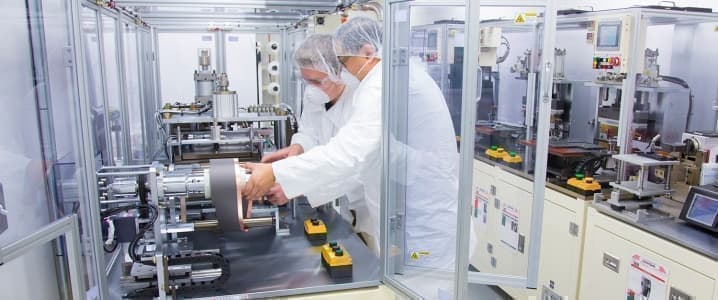Lithium-ion battery recycling is a big topic in energy right now. Recycling lithium itself, the element that makes these batteries what they are, has not garnered so much attention because of the tiny amounts that are used in each battery. Now, this may be about to change.
Lithium is the component that makes batteries rechargeable, that makes them more energy dense than the alternatives, and, ultimately, the element that has made this technology dominant in consumer electronics and, more importantly, electric cars. It is also the one metal in batteries that does not get recycled because of how little of it there is in batteries. Yet as the number of EVs on the roads increase, we soon may have enough “black mass” to extract lithium at a profit.
Black mass is a mixture of all the active materials in a battery. Until now, recycling plants extracted only metals such as nickel and cobalt from this black mass, since they are present in larger quantities. But now a team of researchers from the Norwegian University of Science and Technology are working on ways to add lithium to the list of materials that can be extracted from a battery.
The team, led by postdoctoral fellow Sulalit Bandyopadhyay, is studying how to recover lithium from black mass through hydrometallurgy, Steinar Brandslet from the NUST writes for Phys.org. Hydrometallurgy is a method of extracting metals from their ores in a water solution of these metals’ salts, but it is also popular as a metals extracting method from recycling material.
Hydrometallurgy is the best choice for lithium because alternative battery recycling methods involve incineration, during which the lithium gets lost. And Norway is the best country for the research because of the number of EVs in it whose batteries will need to be replaced and recycled soon enough to make the research meaningful.
"Our goal is 100 percent recycling of lithium from electric car batteries," says Bandyopadhyay. "We plan to launch a pilot plant in 2024 and a full-scale plant in 2027."
By that year, if EV forecasts materialize, there will be enough battery waste to recycle, including the lithium at profit. In some parts of the world, there will be enough battery waste as soon as next year, according to Circular Energy Storage. The consultancy firm said recently in China alone, some half a million tons of battery waste will be generated by 2020. Recycling these batteries and recovering whatever can be recovered from them will be important. Related: The Best Way To Invest In The Energy Sector In 2020
The world is still far from a truly circular economy with minimum—if any—waste. Yet considerations such as ethical mining and the cost of extracting new metals instead of using ones recovered from batteries are driving an increase in recycling. Just look at the figures, as presented by Circular Energy Storage.
By 2030, the firm says, battery recycling can yield some 35,000 tons of cobalt, 86,000 tons of nickel and as much as 135,000 tons of lithium.
Circular Energy Storage is not alone in these forecasts. A report from Allied Market Research released in April this year calculated that the lithium ion battery recycling market would reach US$2.27 billion by 2025. That’s up from US$138.6 million in 2017, which means a compound annual growth rate of almost 42 percent. This is a pretty impressive growth rate that will necessitate better recycling methods, such as the one being developed by the Norwegian researchers.
It’s a pretty simple equation, really. The more EVs are made and sold, the more batteries will need to be recycled once they reach the end of their productive life, which averages eight years or 100,000 miles. The more batteries there are, the more of each of their component metals there are and the more of these can be extracted from the black mass at cost. The battery recycling market will certainly be an interesting one to watch in the next decade.
ADVERTISEMENT
By Irina Slav for Oilprice.com
More Top Reads From Oilprice.com:
- These Secretive Oil Companies Control $3 Trillion In Wealth
- Creating The OPEC Of Natural Gas
- Argentina's Shale Boom Hits New Milestone



















No, as actually reading and comprehending the article linked to says, often they are guaranteed for 8 years or 100,000 miles. However, just like a powertrain warranty, which is usually for around 5 years/60,000 miles for comparison, EVs generally last much longer.
We don't have a lot of history with EVs to get a better idea how well different companies EV's batteries will last, but it is insanely misleading to say their batteries average 8 years/100,000 miles when that's what they'e warrantied for and as we all know generally you expect things to last much longer than they are warranted for.
I've seen that electrical and electronic waste is generally a pretty big deal, in terms of clean air and water.